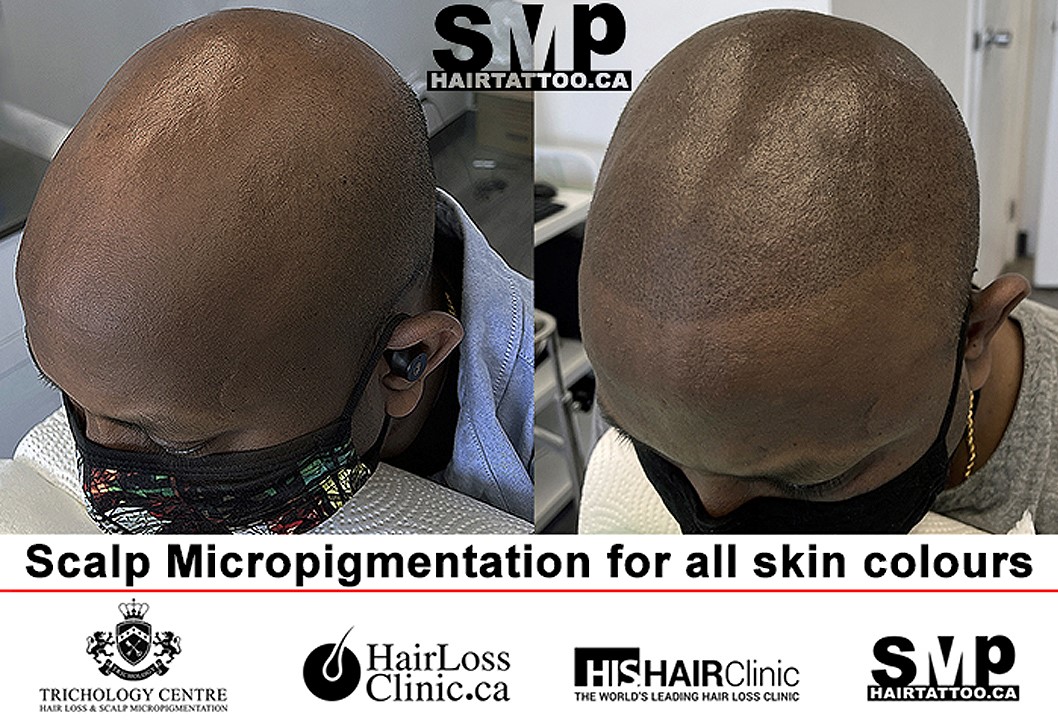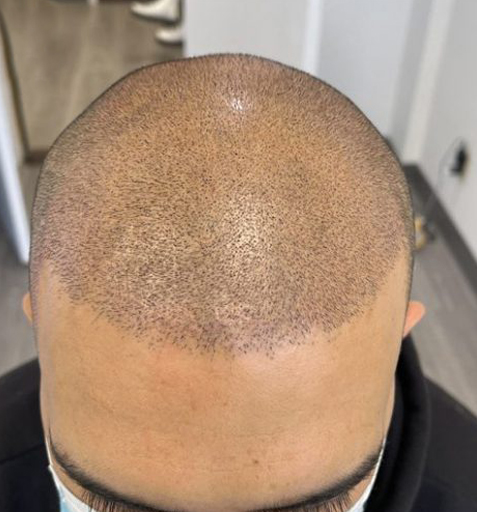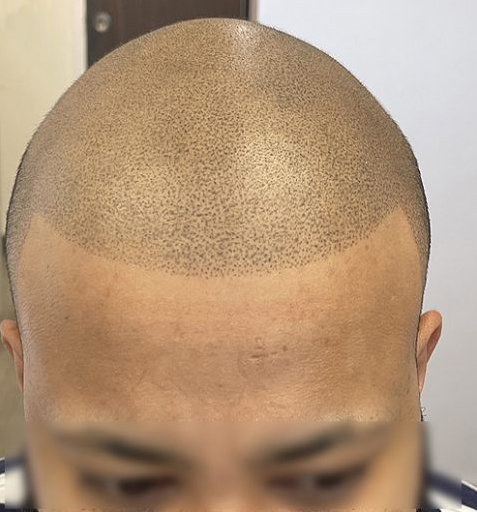
Table of Contents
Scalp micropigmentation (SMP) has emerged as an effective non-surgical solution to various hair-related aesthetic concerns such as baldness, thinning hair, and scalp scars. One commonly asked question about this innovative procedure is whether it suits all skin types. This article aims to address this question, taking an in-depth look at the compatibility of SMP across different skin types.
Introduction to Scalp Micropigmentation
Before delving into the details of skin types and their compatibility with SMP, it’s essential to understand what SMP is. Scalp micropigmentation is a specialized cosmetic procedure that involves the application of pigments onto the scalp using micro-needles. The pigments are skillfully applied to create the illusion of hair follicles, providing the appearance of fuller, denser hair or effectively camouflaging scars on the scalp.
Table of Contents
Classification of Skin Types
There are generally five basic skin types: Normal, Dry, Oily, Combination, and Sensitive. These types are categorized based on moisture content, sebum (oil) production, and sensitivity level.
In addition to these types, the Fitzpatrick Skin Type Classification Scale is commonly used in dermatology to classify skin colour and response to sun exposure. This scale begins with Type I, representing extremely fair skin that invariably burns and never tans, and concludes with Type VI, denoting very dark skin that is immune to burns and always tans.
The Relevance of Skin Type in Scalp Micropigmentation
While basic skin types are crucial in skincare routines, the Fitzpatrick skin type classification is more relevant regarding SMP. This is because the main factors influencing the outcome of SMP are the patient’s skin colour, how their skin reacts to sun exposure and overall skin health.
SMP on Fair Skin (Fitzpatrick Types I & II)
Fair-skinned individuals often have more visible scalp skin due to the contrast with their hair colour. This makes hair loss or scarring more apparent. SMP can effectively reduce the contrast between hair and scalp for these individuals, providing a more balanced, natural look. However, fair-skinned individuals may experience quicker pigment fading due to their skin’s natural exfoliation rate and may require touch-ups more frequently.
SMP on Medium Skin (Fitzpatrick Types III & IV)
Medium skin types often have a balanced skin tone that can handle a wider range of pigments. Thus, SMP practitioners can create a natural, realistic look for these individuals. The contrast between hair and scalp is typically less stark in medium skin types, providing a good canvas for SMP.
SMP on Dark Skin (Fitzpatrick Types V & VI)
SMP on darker skin types requires expertise because the pigments can heal to a slightly lighter colour, given the higher melanin content. The practitioner must accurately anticipate this change to select the right pigment shade. Despite these considerations, SMP can produce a natural, dense-looking hair effect on dark skin, greatly enhancing the aesthetic appearance.
The Influence of Skin Health on SMP
It’s important to note that while SMP is compatible with all skin colours, overall skin health significantly affects the procedure’s outcomes. Healthy skin can better retain pigments, heal more effectively, and provide more consistent and long-lasting results. Conditions of the skin like psoriasis, intense acne, or a predisposition to keloids affect the results of SMP. It’s recommended to thoroughly discuss these issues with the practitioner before undergoing the procedure.
The Role of the SMP Practitioner in Treating Different Skin Types
An experienced and skilled SMP practitioner ensures successful outcomes for all skin types. They can adapt the pigment colour, penetration depth, and application technique to suit the specific skin type, ensuring a natural, realistic look. Therefore, choosing a practitioner with a strong understanding of the unique demands of different skin types is vital.
What is Scalp Micropigmentation?
Scalp Micropigmentation (SMP) is a cosmetic procedure that implants pigments onto the scalp using micro-needles, creating the illusion of hair follicles. This procedure is often used to combat the appearance of baldness, thinning hair, and scalp scars.
What are the basic skin types?
There are five basic skin types: Normal, Dry, Oily, Combination, and Sensitive. These types are determined by moisture content, sebum production, and sensitivity level.
How does the Fitzpatrick Skin Type Classification Scale categorize skin types?
The Fitzpatrick Skin Type Classification Scale is a dermatological tool for classifying skin colour and response to sun exposure. The scale extends from Type I, signifying extremely fair skin that persistently burns and fails to tan, to Type VI, denoting very dark skin immune to burns and consistently tans.
How does SMP work on fair skin (Fitzpatrick Types I & II)?
When applied on fair skin, SMP can effectively diminish the contrast between the hair and the scalp. However, such individuals might experience quicker pigment fading due to their skin’s natural exfoliation rate, necessitating more frequent touch-ups.
How does SMP work on medium skin (Fitzpatrick Types III & IV)?
Individuals with medium skin types can handle a broader range of pigments, allowing SMP practitioners to create a natural, realistic look. The contrast between the hair and scalp is typically less stark in medium skin types, providing a good canvas for SMP.
How does SMP work on dark skin (Fitzpatrick Types V & VI)?
Darker skin types require more expertise in SMP because the pigments can heal to a slightly lighter colour due to the higher melanin content. The practitioner must accurately anticipate this change to select the right pigment shade. With these considerations, SMP can produce a natural, dense-looking hair effect on dark skin, greatly enhancing the aesthetic appearance.
Does the health of the skin affect the outcome of SMP?
Yes, overall skin health significantly impacts SMP outcomes. Healthy skin retains pigments and heals more effectively, providing consistent and long-lasting results. Discuss skin conditions such as psoriasis, severe acne, or keloidal tendencies with the practitioner before the SMP procedure.
How does the SMP practitioner influence the outcome for different skin types?
A skilled SMP practitioner can adjust the pigment colour, penetration depth, and application technique to suit the specific skin type, ensuring a natural, realistic look. Choosing a practitioner with a strong understanding of the unique demands of different skin types is vital.
So, is SMP suitable for all skin types?
SMP is suitable for all skin types as per the Fitzpatrick scale. However, the technique and pigment must be tailored to the individual’s unique skin characteristics, and an experienced practitioner should perform the procedure.
What considerations should be made before choosing an SMP practitioner?
One should consider the practitioner’s understanding of different skin types, their ability to adjust pigment colour, penetration depth, and application technique, and their overall experience and skill level in SMP.
Conclusion
In summary, scalp micropigmentation is a versatile procedure compatible with all Fitzpatrick skin types, from the fairest to the darkest. The key to achieving desirable SMP results across all skin types lies in understanding each skin type’s unique characteristics, anticipating how pigments will heal in the skin, and adjusting the SMP technique accordingly. Therefore, the answer to the question, “Is Scalp Micropigmentation Suitable for All Skin Types?” is a resounding yes, with the caveat that the procedure must be tailored to the individual’s unique skin characteristics and performed by a knowledgeable and experienced practitioner.






© 2024 HAIRTATTOO.CA | Scalp Micropigmentation & Trichology Centre
